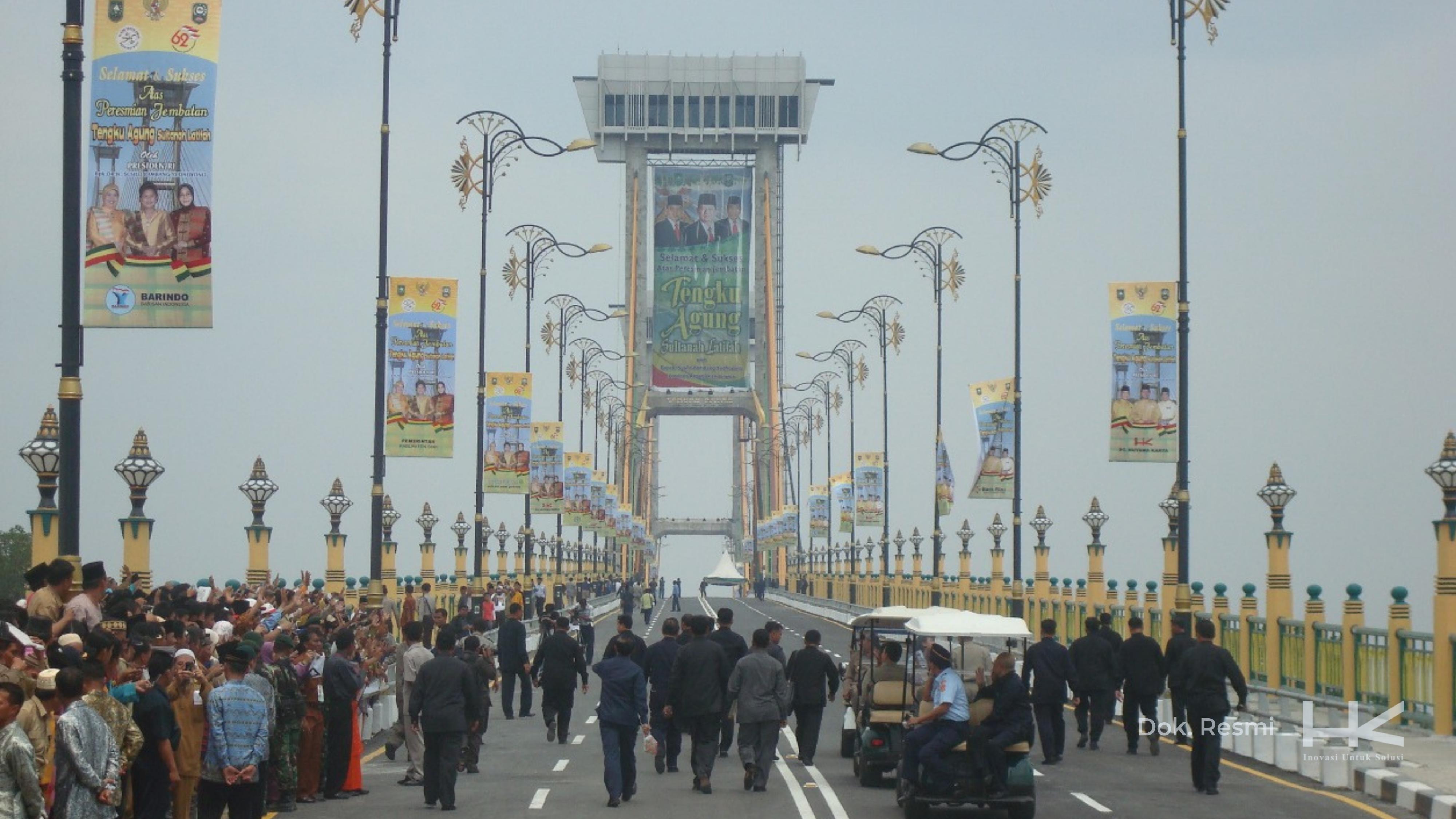HUTAMA KARYA CELEBRATES NATIONAL TRANSPORTATION DAY WITH A LOOK BACK AT SUMATRA’S FIRST CABLE-STAYED BRIDGE

Tengku Agung Sultanah Latifah Bridge Stands as a Testament to Indonesia’s Construction Technology Independence and a Driver of Riau’s Economy for 18 Years
RIAU – In commemoration of National Transportation Day 2025, PT Hutama Karya (Persero) (Hutama Karya) highlights the enduring role of the Tengku Agung Sultanah Latifah Bridge in Siak, Riau, in improving access to services, education, and the regional economy. Built with the expertise of Indonesian engineers, the bridge is Sumatra’s first cable-stayed structure and has been in operation for 18 years.
Spanning 1,239 meters with a width of 16.95 meters, the bridge was inaugurated on August 11, 2007. It connects the northern and southern parts of Siak Regency, serving more than 400,000 residents and facilitating transportation between Siak, Pekanbaru, and Bengkalis. The bridge is also equipped with two 2.25-meter pedestrian walkways, dual 80-meter towers, and a clearance of 23 meters above water at high tide. The project was jointly delivered by Hutama Karya and PT PP (Persero) Tbk.
“This bridge has significantly expanded mobility for residents and streamlined logistics flows in Siak. From a technical perspective, it also marked a milestone in Indonesia’s adoption of cable-stayed bridge technology, executed by local expertise,” said Adjib Al Hakim, Executive Vice President Corporate Secretary of Hutama Karya.
As Hutama Karya’s first cable-stayed project in Sumatra, the bridge paved the way for subsequent landmark projects, including the Soekarno Bridge in Manado, the Siak IV Bridge in Riau, and the Pulau Balang Bridge in Kalimantan.
What sets the Tengku Agung Sultanah Latifah Bridge apart is its multicolored cables, reflecting traditional Malay motifs—making it the only bridge of its kind worldwide. It also features Indonesia’s first outdoor lift system with both slanted and vertical tracks, leading visitors to an exhibition hall and restaurant at the top of the tower with panoramic views of Siak. The bridge is named in honor of Tengku Syarifah Mariam binti Fadyl, wife of Sultan Syarif Kasim II, preserving the legacy of local history and culture.
Economic Impact and Regional Connectivity
The bridge has had a profound impact on Siak’s economic growth. Previously, residents relied on river crossings by boat, which limited mobility and trade.
“Back then this was all forest, and the bridge was urgently needed to connect the two banks of the Siak River. Once the bridge was built, it became the key driver of Siak’s economic development,” said Afni in a video posted on her personal TikTok account on July 29.
Since opening, the bridge has accelerated the flow of goods and services across the region, supported faster distribution of agricultural and plantation products, and spurred new investment in tourism and industry.
At the time of construction, the project was considered high risk due to technical challenges such as its location on a busy international shipping route, difficult soil conditions for foundations, and limited availability of local materials. Hutama Karya overcame these hurdles with advanced technologies, including specialized scaffolding systems for elevated work and precise piling methods.
The bridge was also designed for durability, using high-strength concrete and protective systems against ship collisions. Adjib emphasized that the experience gained from building the Tengku Agung Sultanah Latifah Bridge laid the groundwork for Hutama Karya’s future high-tech infrastructure projects.
“This portfolio reflects our commitment to delivering works that are not only functional but also iconic, serving as a legacy for future generations,” Adjib concluded.
